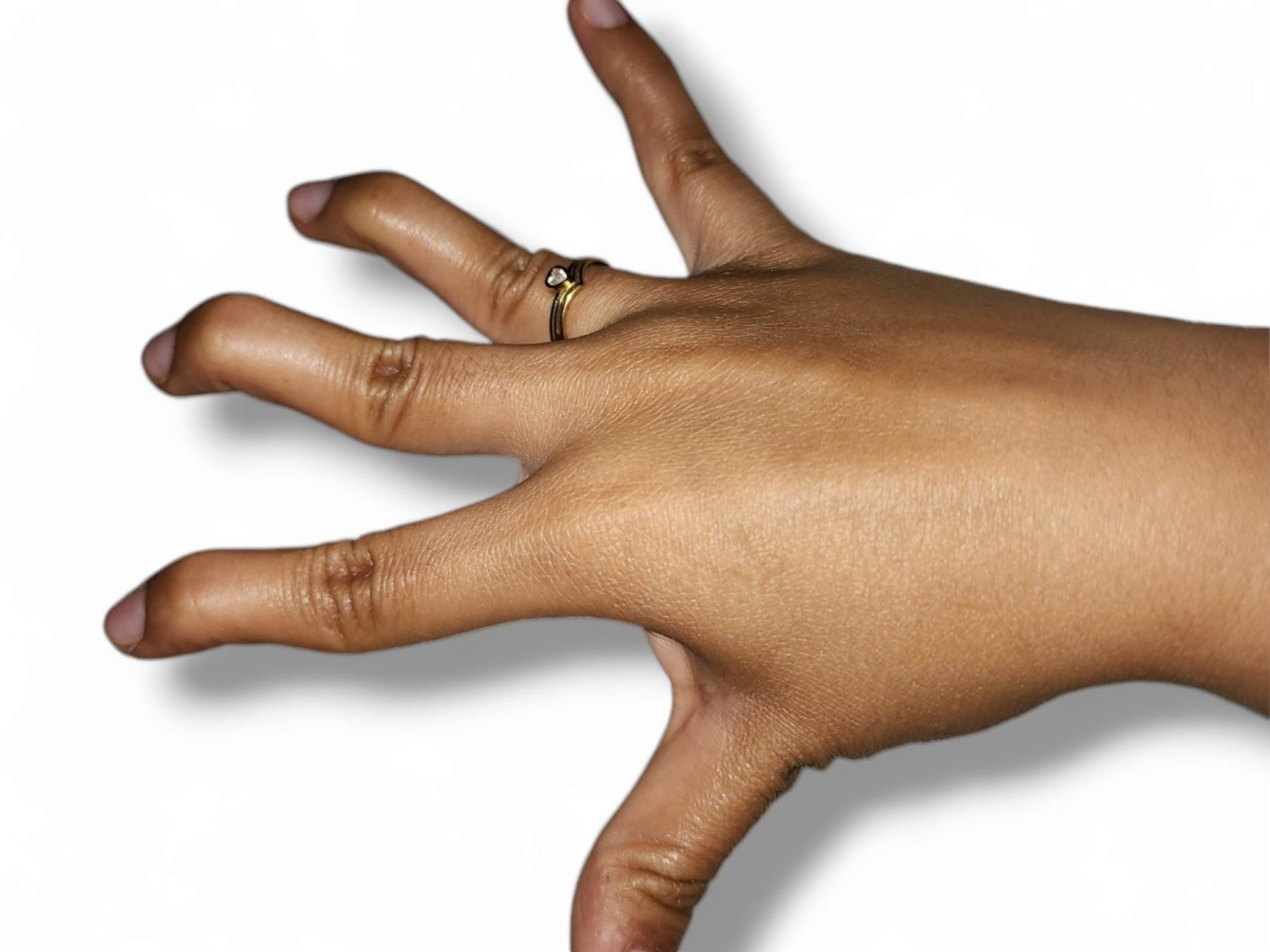Ever wake up to find your fingers feeling like they’ve gone to sleep without you? That odd tingling sensation, or sometimes complete numbness, isn’t just annoying. It might actually be your body trying to tell you something important.
Finger numbness affects millions of people, but few understand what’s really happening under the skin. Whether it’s a temporary pins-and-needles feeling or a persistent loss of sensation, that numbness is a symptom, not a condition itself. Your body is waving a little red flag, trying to get your attention about something deeper going on.
What makes this symptom particularly tricky is that it can stem from so many different causes, ranging from the relatively harmless to the seriously concerning. Let’s unpack what might be behind your numb fingers and when you should take this symptom seriously.
When diabetes steals feeling from your fingertips
If you’re experiencing numbness or tingling in your fingers, especially if it’s accompanied by similar sensations in your feet, diabetes might be the culprit. This chronic condition affects how your body processes blood sugar, and over time, those elevated glucose levels can damage your nerves.
This nerve damage, called diabetic neuropathy, often begins as subtle numbness or tingling in the extremities. Think of it as your body’s electrical system developing short circuits. The nerves that normally send clear signals about touch, temperature, and pain start malfunctioning, creating that strange numb feeling.
For people already diagnosed with diabetes, this symptom serves as an important reminder to keep blood sugar levels under control. For those without a diagnosis, persistent finger numbness might warrant a blood sugar check, especially if you have other risk factors like excess weight, family history of diabetes, or increased thirst and urination.
Managing diabetes effectively through medication, diet, exercise, and regular monitoring can help prevent this nerve damage from progressing and may even improve symptoms if caught early enough.
Trapped nerves cry out for help
Ever notice your thumb, index, and middle fingers going numb, especially at night? You might be dealing with carpal tunnel syndrome, one of the most common causes of finger numbness.
The carpal tunnel is a narrow passageway in your wrist where the median nerve travels into your hand. When this tunnel narrows due to inflammation, the nerve gets compressed, like stepping on a garden hose. The result? Those characteristic symptoms of numbness, tingling, and sometimes pain that tend to worsen at night.
People who perform repetitive hand movements are particularly susceptible. Think typists, cashiers, construction workers, and even avid smartphone users. The continuous motion creates inflammation that squeezes that crucial nerve.
Women experience carpal tunnel syndrome three times more often than men, partly due to naturally smaller wrist anatomy. Pregnancy, menopause, and hormonal changes can also contribute to fluid retention that puts pressure on the nerve.
Early intervention makes a big difference with carpal tunnel syndrome. Wrist splints worn at night, ergonomic adjustments to workstations, and anti-inflammatory medications can provide relief. For more severe cases, a simple outpatient procedure can release the pressure on the nerve, often bringing immediate improvement.
When cold fingers turn ghostly white
If your fingers become numb, turn white or blue, and feel ice-cold after exposure to cold temperatures or during stressful situations, Raynaud’s syndrome might be the explanation.
Unlike other causes of numbness that stem from nerve issues, Raynaud’s involves the blood vessels. Small arteries that supply blood to your skin temporarily narrow, severely restricting blood flow to affected areas. Without proper circulation, your fingers lose sensation and color, looking almost ghost-like.
A typical Raynaud’s attack has distinct phases. First, fingers turn white as blood flow decreases. Then they might turn blue as the oxygen-deprived blood cells accumulate. Finally, as circulation returns, they turn red and begin throbbing or tingling painfully.
About 5% of Americans experience Raynaud’s, with women being affected far more often than men. For most people, it’s more of a nuisance than a serious health threat, but severe cases can lead to tissue damage if left untreated.
Simple measures like wearing gloves in cold weather, using hand warmers, managing stress, and avoiding smoking can help prevent attacks. For more severe cases, medications that dilate blood vessels may be prescribed to improve circulation and prevent tissue damage.
When your body attacks its own joints
Rheumatoid arthritis might not immediately come to mind when thinking about numb fingers, but this autoimmune disease can certainly cause this symptom.
Unlike osteoarthritis, which results from wear and tear, rheumatoid arthritis occurs when your immune system mistakenly attacks the lining of your joints. This creates inflammation that not only causes joint pain and stiffness but can also put pressure on nearby nerves, resulting in numbness and tingling.
The inflammation from rheumatoid arthritis can also lead to carpal tunnel syndrome as the swollen tissues compress the median nerve at the wrist. Additionally, some medications used to treat rheumatoid arthritis may have peripheral neuropathy as a side effect, further contributing to numbness.
Early diagnosis and treatment of rheumatoid arthritis are crucial for preventing joint damage and managing symptoms like numbness. Modern therapies can often slow or even stop disease progression, helping preserve joint function and nerve health.
Extreme cold takes a dangerous toll
While less common than other causes, frostbite deserves mention as a serious cause of finger numbness. This cold injury occurs when skin and underlying tissues freeze, typically in temperatures below 32°F, though wind chill can accelerate the process.
Frostbite progresses through stages, beginning with cold skin and a prickling feeling, advancing to numbness, then hard, waxy-looking skin. The affected areas may blister upon rewarming and, in severe cases, turn black and require amputation.
People with conditions that affect circulation, like diabetes or Raynaud’s syndrome, face higher risks of frostbite. Smoking, which constricts blood vessels, also increases vulnerability to cold injuries.
If you suspect frostbite, seek medical attention promptly. While waiting for help, rewarm the area gradually with warm water, never hot, and avoid rubbing the affected area, which can cause further tissue damage.
When alcohol affects your nerves
Long-term heavy drinking can lead to alcoholic neuropathy, a form of nerve damage that often manifests as numbness or tingling in the hands and feet. This occurs because alcohol has toxic effects on nerve tissue, both directly and through nutritional deficiencies that commonly accompany alcohol use disorder.
Symptoms typically begin with numbness in the feet and hands, which may progress to burning pain, muscle weakness, and difficulty with coordination. The damage can become permanent if drinking continues, making early intervention crucial.
Recovery depends on complete abstinence from alcohol, nutritional supplementation, and sometimes medications to manage painful symptoms. While nerve damage may be permanent in advanced cases, stopping alcohol use prevents further deterioration, and some improvement may occur over time.
People experiencing numbness along with alcohol withdrawal should seek medical attention immediately, as severe withdrawal can be life-threatening and requires professional management.
When to take numbness seriously
While occasional, brief episodes of finger numbness might not cause concern, certain situations warrant prompt medical attention.
Sudden numbness in fingers, especially when accompanied by weakness in an arm, facial drooping, speech difficulties, or vision changes, could indicate a stroke. This is a medical emergency requiring immediate care.
Numbness following a neck or head injury needs immediate evaluation, as it may signal nerve damage or spinal cord injury. Similarly, numbness after a fall or impact to the arm or hand should be assessed professionally.
Progressive numbness that steadily worsens or spreads to other parts of the body suggests an underlying condition that needs diagnosis and management. Don’t wait until symptoms become severe before seeking help.
Numbness accompanied by muscle weakness, coordination problems, or difficulty with fine motor tasks might indicate more serious nerve or neurological issues requiring thorough evaluation.
Finally, if numbness interferes with daily activities or safety, it’s time to see a healthcare provider. Simple tasks like buttoning shirts, typing, or holding objects become not just difficult but potentially dangerous when you can’t feel properly with your fingers.
Taking control of finger numbness
While not all causes of finger numbness can be prevented, several strategies can help reduce your risk or manage existing symptoms.
Take frequent breaks during repetitive hand activities like typing, knitting, or using tools. Simple stretching exercises for your hands and wrists can improve circulation and reduce pressure on nerves.
Maintain proper posture while working, as slumping forward can compress nerves in your neck and shoulders that connect to your hands. An ergonomic workspace setup can make a significant difference in preventing nerve compression.
Manage chronic health conditions like diabetes through proper treatment and lifestyle modifications. Keeping blood sugar levels under control is essential for preventing diabetic neuropathy.
Limit alcohol consumption to moderate levels or avoid it completely if you’ve experienced alcohol-related health problems. The recommended maximum is one drink daily for women and two for men.
Protect your hands from extreme cold with proper insulation, layering, and limiting exposure time. This is especially important for people with conditions that affect circulation.
By understanding the various causes of finger numbness and taking appropriate preventive measures, you can protect your nerve health and maintain proper sensation and function in your hands. When numbness does occur, paying attention to associated symptoms and patterns helps determine whether it’s a minor inconvenience or a sign of something that needs medical attention.
Remember, your hands connect you to the world through touch, creation, and expression. Protecting their health and function is worth every effort, starting with understanding what your numb fingers might be trying to tell you.















